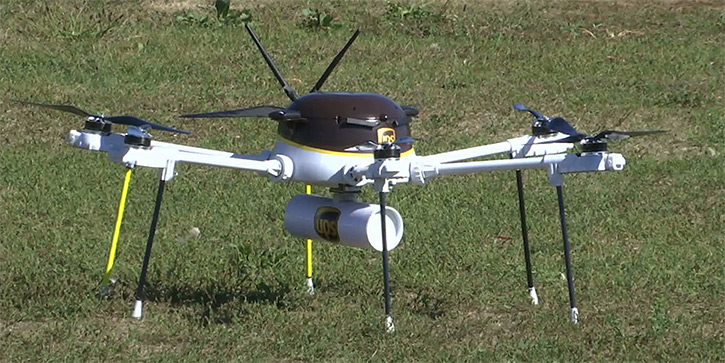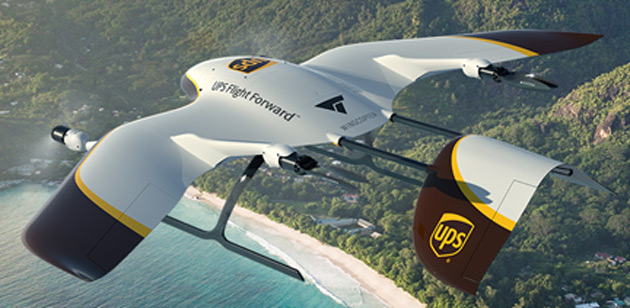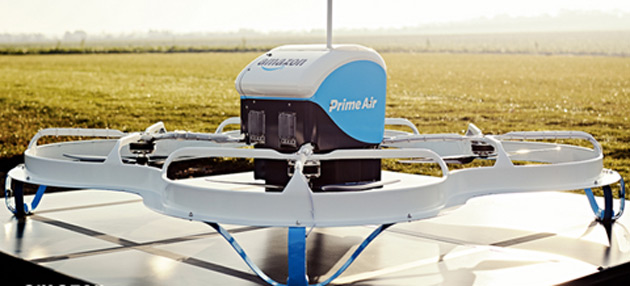
The First Flying Cars Are in Our Line of Sight
-
 Dawn Pennington
Dawn Pennington
- |
- Reality Check
- |
- June 23, 2020
Most Americans watched The Jetsons on black-and-white TV sets. But William Hanna and Joseph Barbera’s most colorful ideas quickly sprung up all around us… and made a lot of people rich in the process.
Rosie the Robot’s real-life counterpart, iRobot (IRBT), just saw its sales surge among quarantined Americans eager to outsource their housework. And 2020’s lockdown would have looked a lot different without Orbit City’s video calls and other smart-home technologies.
The only thing missing is George Jetson’s lauded flying car. But we won’t have to wait until 2060 to get one.
The same technology that powered his son Elroy’s toy drones will get us there. And we already have that, too.
Dude, Where’s My Flying Car?
Companies have the parts. They just need the vision, literally.
If you’ve ever operated a drone or seen one in flight, you know it must stay within the operator’s line of sight.
Drones are equipped with cameras, of course. But they don’t give you a simultaneous 360-degree view in every direction. Lose sight of your drone, and the odds of hitting something—or someone—rise dramatically.
Getting past this limitation is what is known as Beyond-Visual-Line-of-Sight flight, or BVLOS.
And the technology being developed that enables BVLOS flight is critical to safely integrating autonomous drones into our airspace.
Another Small Step for Man
The arrival of autonomous drones—where they operate with no human intervention—will permanently alter how we view transportation and distance.
Fever and the flu got you confined to bed? UPS (UPS) received FAA approval for its Flight Forward drone service (although it’s restricted to suburban and rural areas) and partnered with CVS Pharmacy to deliver medication.

An autonomous drone—what UPS calls a wingcopter—will quickly deliver the relief you need.
Source: UPS
We recognize that this is a “small flight for man.” But the sky really is the limit here.
In the middle of a weekend project or a home-cooked meal and discover you don’t have the things you need to get the job done?
Don’t waste time driving and standing in a checkout line. Get what you need delivered by drone.
UPS’s drone airline was the first to get broad federal approval. But it is flanked by two soon-to-be-lightweight heavyweights:
- Amazon (AMZN), which is prepared to launch its own drone delivery service, Prime Air.
- Google (GOOGL), whose autonomous delivery service Wing was the first to get approval in the US as a certified air carrier.

Source: Amazon
Cargo weights are still small, with initial loads maxing out at 55 pounds for UPS, and only up to about five pounds for the others.
So, today’s “flying cars” are really just big-kid toys. But with battery technology getting lighter, drone-makers are eliminating the roadblocks that stand in their way.
Next up, a way to avoid roadblocks altogether…
Sense and Avoid
Before we get to this new world of convenience, drones must first be able to safely navigate from point A to point B without slicing powerlines, crashing into buildings, or colliding with pedestrians.
Doing that requires two things: computer vision and imaging radar.
Pairing these two technologies creates what is known as onboard sense-and-avoid systems.
Using artificial intelligence, algorithms, and machine learning, these systems can detect and interpret the environment around a drone and make real-time decisions.
This hardware and software combination is able to facilitate course corrections and achieve the safest flight path to avoid collisions without any human involvement.
The advances in sense-and-avoid systems have been so successful that another milestone was reached last year.
In August 2019, the FAA authorized the first-ever BVLOS drone operation in the US that used only onboard sense-and-avoid technology. Before this authorization, BVLOS drone missions were required to use ground-based radar assistance.
Then in March 2020, a similar first was reached in Canada. Transport Canada approved the first BVLOS certificate for commercial drone flights that also used only onboard sense-and-avoid systems.
Both of these BVLOS approvals were for test operations within clearly defined airspaces and for specific missions.
Nonetheless, the moves were a huge leap forward in autonomous drone operations.
It won’t be long before we see commercial autonomous drones being used in urban, suburban, and rural areas all across America.
The Sky Really Isn’t the Limit
Anticipating the fully approved use of commercial autonomous drones, money has been pouring into this market.
BIS Research projects that revenue in the BVLOS drone market will surpass $34 billion by 2029, nearly double the revenue this market saw in 2018.
That figure is just a best guess. The actual size of the drone market could easily be much higher as the possible uses for drones just keeps growing.
Here is a brief list of businesses that will benefit by using drones:
- Electric utilities monitoring powerlines for damage or safety issues.
- Railways inspecting tracks, bridges, and other infrastructure.
- Oil and gas industry to inspect pipelines.
- Agriculture to survey crops, assist with planting, and control pests.
- Search and rescue for scene assessment and medical supply delivery.
The application of sense-and-avoid systems goes beyond drones. It will be deployed in autonomous aircraft that transport people—like air taxis—to safely navigate airspace that is shared by both manned and unmanned aircraft.
Some of the most exciting companies that are driving advances in this space are private. Two such firms that kept surfacing during our research were Iris Automation and Echodyne Corp.
We will continue to monitor the autonomous drone market and the technologies behind it for other opportunities.
We’re also keeping a close eye on the sectors we just mentioned. They will give us plenty of opportunities to invest in publicly traded companies that use this Jetsons-esque technology to advance their businesses and, ultimately, boost their shareholders’ returns.
If that’s something you’re interested in hearing more about, let us know here.
Speaking of what’s on your mind…
Your Questions Answered
Reader Stephen P. sent this note on our article about hydrogen fuel cells:
I enjoyed your article. However, you are writing about old technology regarding batteries and electrical energy storage. If you are interested in the future of highly disruptive electrical energy storage, please visit https://zapgo.com. I am very interested in your comments.
RC: Hi Stephen, thanks for writing in. There are some big differences between the tech you mention and hydrogen fuel cells.
We targeted hydrogen fuel cell tech as it is being developed for use in drones. The advantage of this system is reduced weight, and it is best suited for small-scale applications. To help achieve the goal of weight reduction, these fuel cells provide energy only when needed. This eliminates the need to carry stored energy that is not needed and thus reduce weight.
The battery tech being explored by ZapGo—a carbon-ion based “supercapacitor” that performs like a battery—looks like an exciting field. However, it is all about energy storage at scale. The information offered on its website explains there are two major applications being explored for carbon-ion batteries. One is utility-scale batteries designed for grid energy storage. The other is for installing rapid-charge energy storage at filling stations that enable electric vehicles to recharge in a matter of minutes.
There is a micro vs. macro application difference in these two battery technologies.
Pushing the envelope on battery tech and emerging competition for the lithium-ion battery are stories definitely worth our attention.
Same goes for stories like these…
Parting Thoughts
The Jetsons got a lot right about the technologies of the future. But could it have predicted all this…
- Amazon (AMZN) has its AIs on you: Its robotics division built an AI system that scans security camera footage to ensure employees are staying socially distanced. The company is also working on a distance assistant that provides feedback through augmented reality.
- Your screens can talk back now: A cutting-edge chatbot called Replika is providing digital companionship to hundreds of thousands of people in quarantine.
- On the cutting edge: Researchers from Intel (INTC) and UC Berkeley are teaching a robot how to stitch wounds by watching surgical videos. And if you’re interested in big breakthroughs that are happening in the health and biotech space right now, click here.

 Dawn Pennington
Dawn Pennington